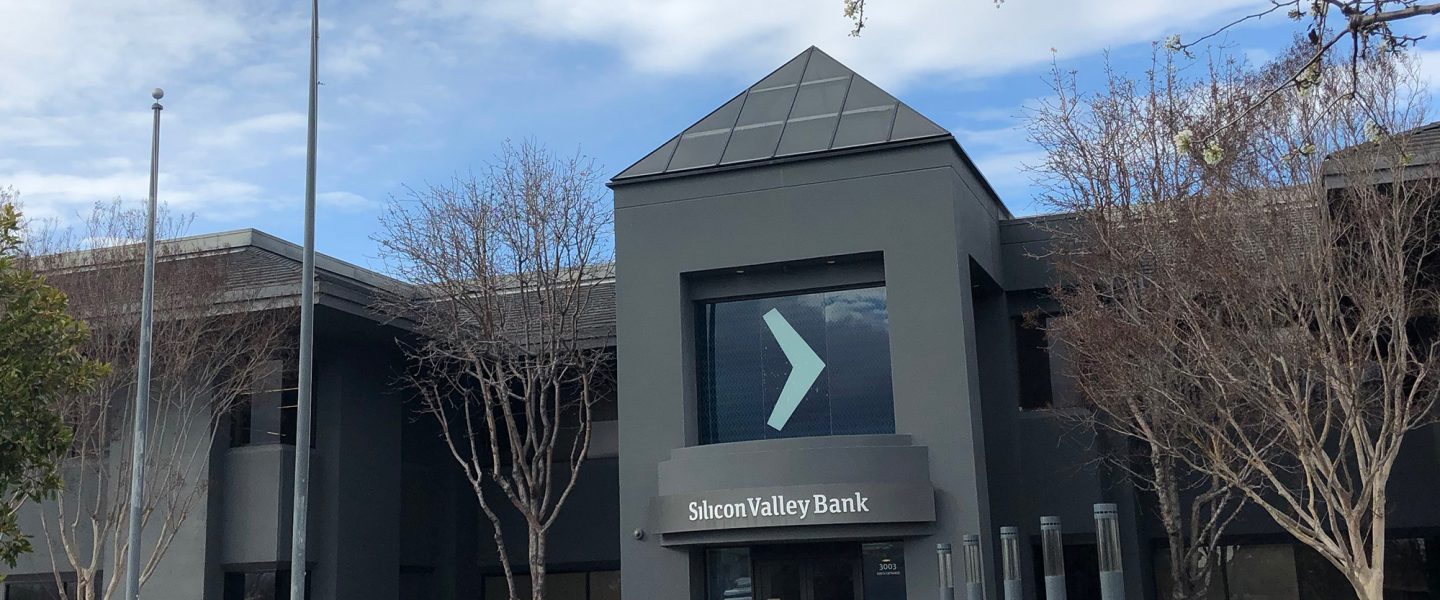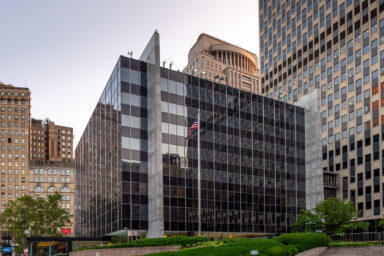The super-rich will not walk away from power. How do we make them leave?
|
Listen To This Story
|
Last week’s collapse of Silicon Valley Bank (SVB) and its subsequent rescue has much to tell us about the state of our lives, the nation-state we inhabit, and what’s left to do if we’re unhappy with things as they are.
What Happened to SVB?
Let’s start with why the bank collapsed. In a nutshell, the bank was under-capitalized, its assets over-exposed to interest rate increases, and it held too many accounts with assets greater than the $250,000 limit covered by the FDIC. All of that came into play after a classic run on the bank’s deposits.
As one bank analyst put it via email (my emphasis):
Silicon Valley Bank is the 16th largest US bank whose clients are mostly high-tech firms. On Thursday shares of SVB Financial Group sunk 60% after it disclosed it had sold over $20 billion in securities which resulted in a nearly $2 billion loss. The sales followed larger than expected declines in deposits as its clients have withdrawn many of their funds on deposit to pay their bills faster than the bank anticipated. SVB was reasonably well capitalized but had invested in longer maturity Treasuries that have decreased in value as the Fed has raised rates in its battle to control inflation, so its rush to sell securities to replenish cash [this is the bank run; depositors wanted out] resulted in rather significant losses. On Friday morning SVB looked to raise capital from willing institutional investors, but clients had already withdrawn a significant portion of their deposits, essentially killing the small possibility of a quick sale to a larger institution. By later in the day Friday, the bank was officially shut down by California regulators and was taken over by the FDIC.
The bank’s assets totaled $210 billion. Uninsured deposits totaled $160 billion. A run on the bank’s assets, in the form of a rush to move deposits to other institutions, was expected to start the following Monday (amid some talk that the big depositors themselves would trigger the run while screaming for a bailout).
To forestall that event, the FDIC decided to extend, free of charge, interest rate protection to every dollar deposited, starting Monday. Krystal Ball and Saagar Enjeti explain:
Washington Post reporter Jeff Stein did a TikTok on why this is still really a bailout. Of course, the bailed-out beg to differ. As one member of the super-rich class just wrote:
This was not a bailout. During the GFC, the gov’t injected taxpayer money in the form of preferred stock into banks. Bondholders were protected and shareholders were diluted to varying degrees. Taxpayer money was put at great risk. Many people who screwed up suffered minimal to…
— Bill Ackman (@BillAckman) March 13, 2023
Can’t be raising those 2008 anti-bailout hackles, can we?
Feb. 13, 2010 — The government’s $700 billion rescue of the financial system in 2008 was as popular as “bailing out rattlesnakes,” Vice President Joe Biden said Friday in Seattle. “In fact,” he quipped, “I like some of the snakes better.”
Keep the (ironic) Fed part of that story — “as the Fed has raised rates in its battle to control inflation” — in mind. In its rush to impoverish the working class by raising the unemployment rate to 4.6 percent, it accidentally impoverished its own, or the big-dollar part of its own that owns the Big Tech.
All This and Corruption Too
It’s highly possible, one could even say likely, that those massive deposits — Roku alone kept almost half a billion dollars in a single account — were part of a corrupt set of practices by the bank itself and its big-dollar clients.
SVB would typically require, as part of its venture debt investments into emerging companies, that the money would be held in an account with SVB. SVB would then offer concierge, I think they called it white glove, services to the founders including personal LOCs, mortgages etc.
— Dhananjay (DJ) Ghildyal (@Dj_Ghildyal) March 12, 2023
David Dayen, in an excellent, comprehensive piece, writes: “So you have depositors that either didn’t know the first thing about risk management, or were bribed by the bank into neglecting it.”
Keep in mind who these depositors are: the very, very wealthy in the West Coast venture capital world. The corruption didn’t start just with the bank. The VCs often initiated it. As a friend and former Silicon Valley entrepreneur pointed out to me recently:
SVB was a special case. VCs required the companies they funded to keep their cash there. So the companies (and their employees) really were victims, not incompetent at risk management. In exchange the VCs received various favors from the bank. This is how Silicon Valley works behind the scenes. I was in one deal where the lead VC for our funding required a secret kickback of a certain % of the company stock and that this arrangement be kept secret from the firm. This is typical.
Where Does That Leave Us, Part I
Where that leaves us is here: The US banking system, which hasn’t been private in my recent memory, has been officially taken under the wing of the federal government, with every deposited dollar now de facto insured by the FDIC.
The Fed says its new lending facility is big enough to cover all US uninsured deposits and that it is "prepared to address any liquidity pressures that may arise" https://t.co/XwS40BS4hk @FinancialTimes
— Colby Smith (@colbyLsmith) March 12, 2023
To cover these claims, the FDIC normally collects money from the banks receiving the insurance benefit. This means that the covered banks prepay a reasonable amount for a bailout of depositor funds up to $250,000 per account.
What would a “reasonable amount” be to cover all funds on deposit in the US? Are the banks willing to prepay it? Highly unlikely. After all, who’s going to make them? The government they control?
So the federal government has nationalized the banking system, or nationalized its insurance of bank deposits to 100 percent of risk, all at no new cost to the banks.
What do you think these banks will do next, with that worry off their backs? I hesitate to find out, but I know we’re about to.
Where Does That Leave Us, Part II?
The second “where does that leave us?” leaves the financial realm and enters the political. If Saagar Enjeti is right, the rich decided that taking even a 10 percent loss (“haircut”) via the normal unwinding process was still too big an ask.
Meanwhile, in East Palestine, OH, where the working class makes its life, this went on (emphasis added):
With a population of about 5,000 people, there are roughly 2,600 residential properties in East Palestine according to Attom, a property data provider. The average value of a property there in January of this year, prior to the derailment, was $146,000, according to Attom.
Taken together, the value of all residential real estate in the town adds up to about $380 million, including single family homes and multi-family properties.
Those values are only a fraction of the money that Norfolk Southern earns. Last year it reported a record operating income of $4.8 billion, and a net income of $3.3 billion, up about 9% from a year earlier. It had $456 million in cash on hand on its books as of December 31.
It’s been returning much of that profit to shareholders, repurchasing $3.1 billion in shares last year and spending $1.2 billion on dividends. And it announced a 9% increase in dividends just days before the accident.
A year ago its board approved a $10 billion share repurchase plan, and it had the authority to buy $7.5 billion of that remaining on the plan as of December 31.
The point couldn’t be more simple. When the wealthy face losses, the government they control bails them out, within days if necessary.
When the rest of us face losses, we’re on our own. Neither the wealthy who caused the mess nor the government that represents “the people” will step up to the plate.
And it will be this way forever unless force is applied. Which brings us to the point of this piece.
The Only Choice We Have
Neither institutional party wants to save real workers. One is a Party of the Status Quo, the other a Party of Pretend Rebellion.
If indeed…
-
-
- The culture of the obscenely wealthy is “pathological” and predatory.
-
-
-
- There’s one set of rules for the rich and another for the rest of us.
-
-
-
- They will never stop asserting their right to profit and thrive at everyone else’s expense until they are forcibly stopped.
-
-
-
- Anger against this predation has burned since the Obama bailout of 2008.
-
-
-
- The people’s anger is bipartisan. Republican and progressives alike, at the voter level, share the emotion.
-
-
-
- There will always be enough Joe Manchins to sabotage progressive agendas. There will always be enough Hakeem Jeffries to keep most progressives from office. There will always be enough betrayals to keep workers in line.
-
-
-
- Trump ran like a Sanders progressive in 2016, and betrayed every promise. Republicans are no more the party of the working class than I am your mother.
-
If all of that is true, then nothing will change until we make it change.
That’s the only choice we have. The question is, how do we force a change?
There are any number of ways, some legal, some less so, to force change on a culture, on society. I’d like to look at a few and get your reactions, starting with a proposal by Kshama Sawant that seems worth thinking about.
But let’s save her proposal for next time. What are your thoughts for now? How do we free ourselves? Don’t say, “There’s nothing we can do.” There’s never nothing we can do, just things we haven’t thought of yet.
Time to start thinking our way out. Otherwise, this from the past becomes our future.




